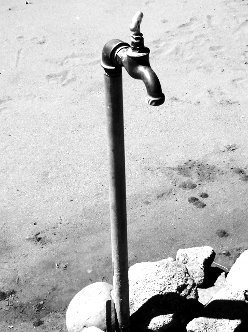Council makes drought link
 The Climate Council says the severe drought gripping much of Australia has been exacerbated by climate change.
The Climate Council says the severe drought gripping much of Australia has been exacerbated by climate change.
A new report by the local climate authority says Australia’s water security has already been significantly influenced by climate change.
Rainfall patterns are shifting and the severity of floods and droughts has increased, leading to a range of changes including;
- Droughts becoming more severe due to drier, hotter conditions, leading to declines in soil moisture due to increased water loss from plants and soils.
- Southeast Australia experiencing a 15 per cent decline in late autumn and early winter rainfall, and a 25 per cent decline in average rainfall in April and May over the past two to three decades
- Hotter conditions and reduced rainfall have led to less runoff into streams, rivers, lakes and dams in the southwest and southeast of the continent. In southwest Western Australia, reductions in rainfall, due to climate change, have led to a more than 50 per cent decline in streamflow. Across the Murray-Darling Basin, streamflows have declined by 41 per cent since the mid-1990s
- A warmer atmosphere that holds more water vapour, contributing to an increase in heavy rainfall events and an increased risk of flash flooding
“On-going failure to reduce greenhouse gas emissions from coal, oil and gas, globally and here in Australia, has already negatively affected Australia’s water security and will increasingly affect it into the future,” the Climate Council states.
Profound changes to Australia’s water cycle are projected, with increasing threats to urban water supplies, the agriculture sector and natural ecosystems.
Severe droughts are expected to become more frequent, especially across southern Australia, while extreme rainfall events are expected to become more intense everywhere except, perhaps, for the southwest corner of Western Australia.
Across southern Australia, cool season rainfall is projected to continue decreasing and time spent in drought is projected to increase.
Less water is likely to be available for agriculture, urban water supplies and ecosystems in coming decades across southern Australia including regions surrounding Melbourne, Adelaide and Perth.
A 2°C rise in average global temperatures could lead to an 11–30 percent increase in extreme rain events (wettest day of the year and wettest day in 20 years) across Australia.








 Print
Print